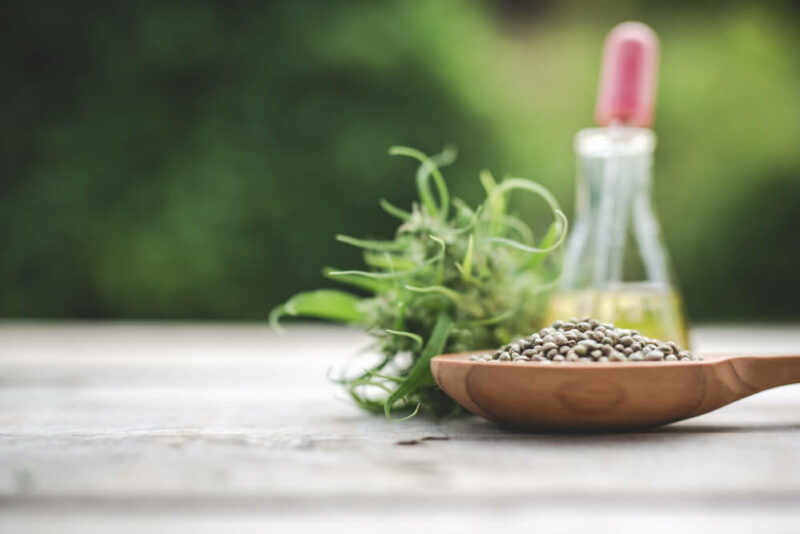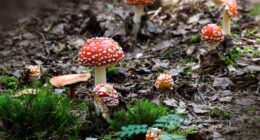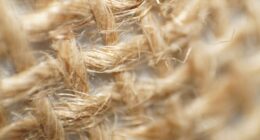Dill weed refers to the leaves of the dill plant, used fresh or dried for flavoring, while dill seed is the dried fruit of the plant, used as a spice.
In the world of herbs and spices, dill plays a versatile role. The dill plant, scientifically known as Anethum graveolens, offers two distinct flavors and culinary ingredients: dill weed and dill seed. Understanding the difference between the two is essential for enhancing your dishes and creating unique flavors.
Key Takeaways:
- Dill weed and dill seed come from the same plant, but they have different flavors.
- Dill weed provides a sweet and grassy taste, while dill seed offers a pleasantly bitter and earthy flavor.
- Dill weed is commonly used as a garnish and flavor enhancer, while dill seed is frequently used in pickling and spice blends.
- If you need to substitute dill weed, tarragon, parsley, or fennel leaves can work well. For dill seed, consider caraway, anise, or fennel seeds.
- Both dill seed and dill weed have lesser-known uses, including medicinal properties and health benefits.
What is Dill?
Dill, also known as Anethum graveolens, is a fragrant plant that belongs to the celery family. It is native to regions near the eastern end of the Mediterranean Sea and is often associated with cold-climate countries like Hungary, Poland, and Ukraine. The plant is hardy and can survive in temperatures as low as 25°F. It requires full sun to mature. Dill is commonly used in pickling, but it can also be used in various other culinary dishes.
Dill Weed
Dill weed, also known as dill leaves, is derived from the feathery leaves of the dill plant. With a sweet and grassy taste, dill weed adds a unique flavor profile to dishes, complemented by subtle notes of licorice.
When fresh, dill weed delivers a bold and vibrant taste, enhancing the overall flavor of the dish. On the other hand, dried dill weed offers a more concentrated flavor with a slight hint of mintiness, making it a versatile herb for various culinary applications.
Dill weed is commonly used as a garnish, adding a visually appealing touch to dishes like potato salads, egg sandwiches, and seafood dishes. Its bright and aromatic nature pairs well with flavors such as mustard and garlic, enhancing the overall taste experience.
Culinary Uses of Dill Weed
Dill weed is a versatile herb that can enhance the flavors of a wide range of dishes. Here are some popular culinary uses of dill weed:
- Garnish in potato salads and creamy dressings
- Flavor enhancer in seafood dishes like salmon and shrimp
- Bright addition to egg-based recipes like omelets and quiches
- Complement to milder foods like potatoes, cucumbers, and creamy cheeses
The culinary uses of dill weed extend beyond these examples, making it a flavorful herb that can elevate various dishes.
Comparing Fresh and Dried Dill Weed
| Attribute | Fresh Dill Weed | Dried Dill Weed |
|---|---|---|
| Taste | Bold flavor with a sweep of licorice | More concentrated with a slight minty flavor |
| Application | Garnishing and enhancing flavors in salads, sandwiches, and seafood | Longer cooking times, suitable for soups, stews, and pickling |
| Intensity | Milder | Stronger |
Note: These attributes may vary depending on the specific variety and freshness of the dill weed.
Dill Seed
Dill seed, derived from the dill plant, comprises small and crunchy fruits with a pleasantly bitter taste, complemented by hints of licorice and a touch of camphor. This spice holds a prominent place in pickling, soup, and various meat and fish dishes, thanks to its ability to add depth and earthiness to recipes. Dill seeds are a vital ingredient in traditional corned beef spice blends, enhancing the flavor profile of this popular dish.
Not only cherished for its culinary applications, dill seed offers several medicinal benefits as well. This spice is known for its ability to relieve gas and digestive pain, making it a natural remedy for soothing colic. By incorporating dill seeds into your cooking, you can harness their therapeutic properties while exploring new and delightful flavors.
| Culinary Uses of Dill Seed | Medicinal Properties |
|---|---|
|
|
Substitutes for Dill Weed
If you’re looking for alternatives to dill weed in your recipes, there are a few options that can provide similar flavors and aromas. Here are some substitutes you can try:
Tarragon
Tarragon is a herb with a milder licorice flavor compared to dill. It’s commonly used in Mediterranean dishes and can be a suitable replacement for dill weed in recipes that call for a touch of licorice. Use it sparingly as it has a stronger taste.
Parsley
Parsley is a versatile herb that shares some of the grassy qualities of dill. However, parsley leans more towards a peppery flavor profile. It can serve as a good substitute in Eastern European dishes where dill weed is commonly used.
Fresh Fennel Leaves
Fresh fennel leaves have a similar licorice flavor to dill weed and can be used as a substitute in certain recipes. They work well as a garnish or in Italian and Persian dishes, adding a delightful touch of herbal freshness.
Here’s a comparison table of the substitutes for dill weed:
| Dill Weed | Tarragon | Parsley | Fresh Fennel Leaves |
|---|---|---|---|
| Flavor | Mild licorice | Grassy with a hint of pepper | Similar to dill weed |
| Suitable Cuisines | Mediterranean | Eastern European | Italian, Persian |
| Usage | As a substitute with milder licorice flavor | As a substitute with grassy and peppery flavors | As a substitute with similar licorice flavor |
Remember, while these substitutes can mimic the flavors of dill weed, they may not provide the exact same taste profile. It’s always a good idea to consider the specific recipe and adjust the amounts accordingly to achieve the desired flavor. Experimentation with these alternatives can lead to exciting new culinary discoveries!
Substitutes for Dill Seed
If you find yourself in need of a substitute for dill seed, there are a few options you can consider. Caraway, anise, and fennel seeds can provide a similar flavor profile to dill seed, allowing you to create delicious dishes even without the presence of dill seeds themselves.
Caraway Seeds
Caraway seeds have a pungent flavor with distinct notes of camphor and a spark of licorice. They can add a bold and aromatic touch to your dishes. You can use caraway seeds as a 1:1 ratio substitute for dill seeds, ensuring that you maintain the desired flavor balance in your recipe. Caraway seeds can be toasted, ground, or used whole, depending on your preference. Their robust flavor makes them suitable for dishes with prolonged cooking times.
Anise and Fennel Seeds
Anise and fennel seeds both offer a more pronounced licorice flavor compared to dill seeds. They can be used as substitutes in recipes where the licorice notes of dill seeds are crucial. When substituting with anise or fennel seeds, consider using slightly less quantity than what the recipe calls for. This adjustment ensures that the licorice flavor doesn’t overpower the dish. Anise and fennel seeds can be used toasted, ground, or whole, depending on your culinary needs.
Table: Comparison of Substitutes for Dill Seed
| Substitute | Flavor Profile | Usage Ratio | Culinary Applications |
|---|---|---|---|
| Caraway Seeds | Pungent with notes of camphor and licorice | 1:1 with dill seed | Pickling, breads, soups, stews, meat dishes |
| Anise Seeds | Pronounced licorice flavor | Use slightly less than dill seed | Breads, desserts, Mediterranean dishes |
| Fennel Seeds | Pronounced licorice flavor | Use slightly less than dill seed | Indian, Mediterranean, and Middle Eastern cuisine |
Uses for Dill Seed and Dill Weed
Dill seed and dill weed are versatile ingredients that offer a range of culinary uses. Each brings its unique flavor and aroma to different dishes, enhancing their taste and appearance.
Dill Seed

Dill seed is commonly used in pickling, bringing a delightful tanginess and depth of flavor to preserved vegetables. Its strong and slightly bitter taste pairs beautifully with acidic ingredients such as vinegar and lemon juice. The earthy and aromatic qualities of dill seed make it a valuable addition to breads, soups, stews, and lentil dishes as well. In fact, dill seeds are often included in traditional spice blends for corned beef, providing a distinctive and savory note. Whether in pickles or other savory recipes, dill seed adds a unique touch that elevates the overall flavor profile.
Dill Weed

Dill weed, on the other hand, is primarily used as a garnish and flavor enhancer. Its feathery leaves bring a fresh and vibrant touch to a variety of dishes. Dill weed is commonly found in potato salads, seafood dishes, and creamy dressings, where its sweet and grassy taste harmonizes perfectly with the ingredients. It also pairs well with mild cheeses, lighter meats like fish and chicken, and various vegetables. Adding dill weed to your culinary creations not only imparts a pleasant flavor but also brightens the presentation with its vibrant green color.
In summary, dill seed is valued for its pickling properties and ability to enhance the flavors of breads, soups, and various savory dishes. Meanwhile, dill weed shines as a garnish and flavor enhancer, adding a refreshing and aromatic element to salads, seafood, dressings, and more.
| Dill Seed | Dill Weed |
|---|---|
| Pickling | Garnish |
| Breads | Seafood dishes |
| Soups | Potato salads |
| Stews | Creamy dressings |
| Lentil dishes | Mild cheeses |
Dill Seed – Lesser-Known Uses
Dill seed, derived from the dill plant, is not just a delicious spice but also a versatile ingredient with numerous lesser-known uses. Apart from enhancing the flavor of your culinary creations, dill seed offers a range of benefits.
1. Substitute for Caraway Seeds
If you run out of caraway seeds, don’t worry! Dill seeds can be a fantastic substitute. They have a similar flavor profile, with pleasantly bitter notes of licorice and hints of camphor. You can use dill seeds in bread, soups, and vegetable dishes for a delightful twist.
2. Herbal Remedies
For centuries, dill seeds have been used in traditional herbal remedies. They are believed to have calming properties and can help with anxiety, digestive issues, colic, hiccups, and bad breath. Whether in the form of teas, tinctures, or natural remedies, dill seeds can be a valuable addition to your holistic wellness routine.
3. Digestive Agent
Known for their digestive benefits, dill seeds are commonly used to soothe stomach discomfort and promote healthy digestion. They can help alleviate symptoms such as bloating, gas, and indigestion. Incorporating dill seeds into your meals or consuming them in tea form may provide relief and aid in proper digestion.
4. Calcium Source
Did you know that dill seeds are a good source of calcium? Calcium is vital for maintaining strong bones and teeth. Including dill seeds in your diet can contribute to your daily calcium intake, supporting bone health and reducing the risk of conditions like osteoporosis.
5. Anti-Insomnia Aid
Dill seeds possess natural sedative properties that can help promote good sleep and combat insomnia. Consuming dill seed tea before bedtime may help relax your mind and body, allowing you to drift into a restful slumber and wake up refreshed.
6. Bad Breath Combatant
Bad breath can be embarrassing, but dill seeds might offer a solution. Chewing on dill seeds can freshen your breath and combat the bacteria that cause unpleasant odors. Their natural aromatic qualities make them an effective breath freshener.
With its versatility and array of benefits, dill seed is more than just a flavorful spice. Incorporate it into your culinary creations and daily wellness routine to enjoy its unique flavor and reap the rewards it offers.
Dill Weed – Lesser-Known Uses
Dill weed, in addition to its common culinary uses, has a variety of lesser-known applications that make it a versatile herb. Whether you’re looking for a substitute for tarragon or seeking natural remedies, dill weed has got you covered. Let’s explore some of its fascinating uses:
1. Substitute for Tarragon
When you run out of tarragon, dill weed can be used as a substitute. It possesses a similar flavor profile, with delicate hints of licorice. Use it in dishes and dressings that call for the subtle anise-like taste of tarragon.
2. Anti-Infection Aid
Dill weed is known for its anti-infection properties. It contains compounds that help combat harmful bacteria and fungi, making it a natural ally in promoting a healthy immune system and fighting infections.
3. Health Booster
Dill weed is packed with antioxidants, vitamins, and minerals that contribute to overall health. These beneficial nutrients help protect cells from damage caused by free radicals and support various bodily functions, including digestion and cardiovascular health.
4. Cholesterol Controller
Studies suggest that dill weed may play a role in managing cholesterol levels. It contains phytochemicals that may help lower LDL (bad) cholesterol and promote a healthier lipid profile. Incorporating dill weed into your diet may contribute to a heart-healthy lifestyle.
5. Cosmetics Additive
Due to its antimicrobial properties, dill weed is commonly used in cosmetics and fragrances. It can help prevent the growth of bacteria and preserve the quality of cosmetic products. Dill weed extract is found in various skincare products, such as toners and cleansers, due to its refreshing and purifying properties.
6. Image: Dill Weed
These lesser-known uses of dill weed highlight its versatility beyond the culinary realm. Whether you’re looking for a substitute ingredient, natural remedies, or additional benefits for your skin and overall health, dill weed offers a range of possibilities.
Conclusion
Dill weed and dill seed have different flavors and uses in cooking. Dill weed has a sweet and grassy taste, perfect for dishes like salads and seafood. On the other hand, dill seed has a bitter, earthy flavor, great for pickling and soups.
It’s important to know that dill weed and dill seed can’t be swapped in recipes. They need different cooking methods to bring out their best flavors. Whether you want something fresh and aromatic or deep and earthy, understanding these differences lets you make tasty dishes. So, whether you’re sprinkling dill weed on a salad or adding dill seed to pickles, both offer lots of tasty options to explore in cooking.
FAQ
What is the difference between dill weed and dill seed?
Dill weed refers to the feathery leaves of the dill plant and has a sweet and grassy taste with notes of licorice. Dill seed, on the other hand, is the crunchy fruit of the dill plant and offers a pleasantly bitter and slightly camphorous flavor.
What is dill?
Dill, also known as Anethum graveolens, is a fragrant plant that belongs to the celery family. It is native to regions near the eastern end of the Mediterranean Sea and is often associated with cold-climate countries like Hungary, Poland, and Ukraine.
What are the uses of dill weed?
Dill weed is commonly used as a garnish in dishes like potato salads, egg sandwiches, and seafood dishes. It pairs well with mustard and garlic flavors and adds a bright and aromatic touch to milder foods like potatoes and creamy cheeses.
What are the uses of dill seed?
Dill seed is commonly used as a spice in pickling, soups, and various meat and fish dishes. It adds depth and earthiness to dishes and is a staple in traditional corned beef spice blends. Dill seeds can also be used in herbal remedies for digestive issues and relief from gas and colic.
What can I use as a substitute for dill weed?
Tarragon, parsley, and fresh fennel leaves can be used as substitutes for dill weed. Tarragon has a milder licorice flavor, parsley has a peppery flavor, and fresh fennel leaves have a similar licorice taste that can be used as a garnish or in Italian and Persian dishes.
What can I use as a substitute for dill seed?
Caraway, anise, and fennel seeds can be used as substitutes for dill seed. Caraway seeds have a pungent flavor with notes of camphor, while anise and fennel seeds have a more pronounced licorice flavor. These seeds can be toasted, ground, or used whole and are suitable for prolonged cooking times.
What are the culinary uses of dill seed and dill weed?
Dill seed is commonly used in pickling and pairs well with acidic ingredients like vinegar and lemon juice. It is also used in breads, soups, stews, and lentil dishes. Dill weed, on the other hand, is used as a garnish and flavor enhancer in dishes like potato salad, seafood dishes, and creamy dressings. It goes well with mild cheeses, lighter meats like fish and chicken, and adds a bright touch to various vegetables.
What are some lesser-known uses for dill seed?
Dill seed can be used as a substitute for caraway seeds in bread, soups, and vegetable dishes. It has also been used in herbal remedies for anxiety, digestive issues, colic, hiccups, and bad breath. Additionally, dill seeds are a good source of calcium and have sedative properties that can aid in promoting sleep and reducing insomnia.
What are some lesser-known uses for dill weed?
Dill weed can be used as a substitute for tarragon in dishes and dressings. It is known for its anti-infection properties and is rich in antioxidants and vitamins that boost overall health. Dill weed can help control cholesterol levels and is often used in cosmetics and fragrances due to its antimicrobial properties. It is also beneficial for eye health and skin maintenance.
How can I differentiate between dill weed and dill seed in recipes?
Dill weed provides a sweet and grassy taste, while dill seed offers a pleasantly bitter and earthy flavor. They cannot be used interchangeably as they require different cooking methods to bring out their unique qualities.
Source Links
- https://spicesinc.com/blogs/dill-weed-vs-dill-seed
- https://northernnester.com/dill-weed-vs-dill-seed/
- https://www.delightedcooking.com/what-is-the-difference-between-dill-seed-and-dill-weed.htm
Image Credits
Featured Image By – jcomp on Freepik
Image 1 By – jcomp on Freepik
Image 2 By – azerbaijan_stockers on Freepik








